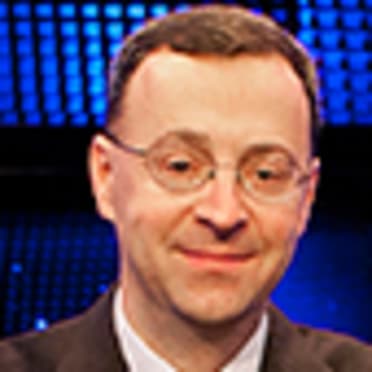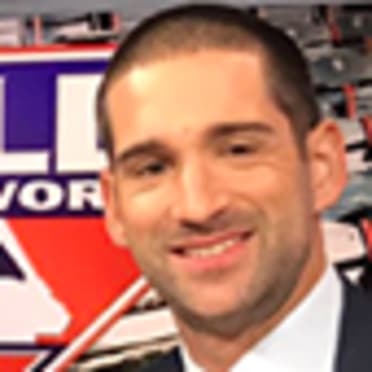Most hyped 2B prospects of the past 20 years
He's so good, Moncada appears twice
It used to be that second base was the position that guys who couldn’t handle playing shortstop would go to play. But that’s no longer the case, even if some once played on the left side of the infield back in their amateur days.
At times, it’s been challenging to find 10 good prospects to fill out our Top 10 second-base prospects lists each year, so we were prepared to struggle to find one top prospect at the position for each team. But we were pleasantly surprised to find a number of former Top 100 prospects, including a former No. 1 overall prospect who was the choice for two different organizations.
American League East
Blue Jays: Brett Lawrie
The 2008 first-round pick (No. 16 overall) was already viewed as a Top 100 prospect when the Brewers dealt him to Toronto for right-hander Shaun Marcum in December 2010. Lawrie opened the next season as MLB Pipeline’s No. 28 overall prospect and looked like the Blue Jays’ second baseman of the future after he slashed .293/.373/.580 with nine homers in his first taste of the Majors after receiving an August callup. But injuries woes and declining performance during parts of four seasons in Toronto landed him with the A’s as part of the 2015 Josh Donaldson trade, and he was traded once again the following offseason, going to the White Sox. He hasn’t appeared in the Majors since 2016 after compiling a .261/.315/.419 line and 15.6 WAR in 588 games.
Orioles: Jonathan Schoop
Signed out of Curacao in August 2008, Schoop broke out as a prospect in 2011, forming an outstanding infield combination with Manny Machado. He played in the Futures Game that season and was on our Top 10 2B prospect list more than once. He’s had a solid big league career (16.1 WAR), highlighted by an All-Star season in 2017 with the O’s that saw him hit 32 homers and drive in 105 runs.
Rays: Vidal Brujan
An overthought as a prospect when the Rays signed him for just $15,000 out of the Dominican Republic in 2014, Brujan was brought along slowly but broke out during his first full season in ’18, when he paced the Minors in runs scored (112) and finished second in stolen bases (55). He made his MLB Pipeline Top 100 debut last year, appearing at No. 60 on the Top 100 midseason re-rank, and opened the 2020 season at No. 45. The 22-year-old is a switch-hitter with plus-plus speed and contact skills befitting of a future leadoff man.
Red Sox: Yoán Moncada
Dustin Pedroia and Mookie Betts were highly regarded prospects but significantly underrated compared to what they would become as big leaguers. By contrast, Moncada was viewed as an elite talent, which is why he landed a record $31.5 million bonus from the Red Sox in March 2015. He ended the '16 season as MLB Pipeline's No. 1 prospect before going to the White Sox that December as the cornerstone of a package for Chris Sale.
Yankees: Robinson Canó
Canó never ranked as a Top 100 Prospect and the Yankees gave the Rangers the opportunity to take him as part of the 2004 Alex Rodriguez trade, but Texas chose Joaquin Arias instead. Signed out of the Dominican Republic for a bonus in the low six figures in '01, Cano never topped .283 or 15 homers in a full Minor League season but did rank as New York's second-best prospect following the 2004 season en route to becoming an eight-time All-Star.
American League Central
Indians: Brandon Phillips
An Expos second-round pick out of a Georgia high school in 1999, Phillips was in the process of establishing himself as the game's top second-base prospect when Montreal sent him, Cliff Lee, Grady Sizemore and Lee Stevens to the Indians for Bartolo Colon and Tim Drew in mid-2002. Phillips struggled in Cleveland but made three All-Star teams and won four Gold Glove Awards after getting shipped to the Reds in '06.
Royals: Christian Colón
Taken by Kansas City with the fourth-overall pick in the 2010 Draft after he batted .349/.432./.538 at Cal State Fullerton and starred for the US Collegiate National Team, Colón was ranked as a Baseball America Top 100 prospect ahead of his first full season and spent four straight years on MLB Pipeline’s Royals list. Though he had fallen to No. 16 on said list by 2014, Colón still made his Major League debut in July that year and subsequently carved out a role as a utility infielder on the Royals’ World Series-runner-up and –winning teams in 2014-15, respectively.
Tigers: Omar Infante
Signed as a teenager out of Venezuela in 1998, Infante rose quickly through Detroit’s system and cracked Baseball American’s Top 100 list at No. 96 in 2002, the same year he made his big league debut as a 20-year-old September callup. While he was a versatile defender who played a variety of positions during his Tigers tenure, Infante’s best season came as a primary second baseman in 2004, when he batted .264/.317/.449 with a career-high 16 homers. He went on to play 15 seasons in the Majors, earning his lone All-Star nod with Atlanta in 2010 and ultimately producing 16.9 WAR with four different organizations.
Twins: Luis Rivas
Rivas was a Top 100 prospect for many years on other lists as the 20th century came to an end. He was still considered a Top 100 prospect in 2001 when he took over as the Twins’ everyday second baseman.
White Sox: Yoán Moncada
In the aftermath of the Sale trade, Moncada ranked No. 2 (behind former teammate Andrew Benintendi) on MLB Pipeline's 2017 Top 100 and returned to the top spot at midseason. He led the big leagues with 217 strikeouts in his first full season in Chicago in 2018 before blossoming into a star last year.
American League West
Angels: Howie Kendrick
Kendrick was a bit of an afterthought as a 10th-round pick out of St. Johns River Community College in Florida back in 2002. All he did after that was hit, jumping on the radar screen a bit when he hit .368 in the Pioneer League in 2003. His pinnacle as a prospect came in 2006 when he was a Top 15 overall prospect and was selected to the Futures Game roster. He’s gone on to post a 34.9 WAR with over 1,700 hits.
Astros: Chris Burke
One of just seven second basemen ever selected with a top-10 Draft pick, Burke starred at Tennessee as the Southeastern Conference player of the year when the Astros took him at No. 10 in 2001. He never hit enough to hold down an everyday job in the Majors but did deliver an 18th-inning homer to win the 2005 National League Division Series vs. Atlanta. José Altuve accomplished much more for Houston but drew little acclaim until leading the Minors in hitting at .389 in 2011 -- when he also graduated to the big leagues before he could make a Top 100 list.
Athletics: Jose Ortiz
Heading into the 2001 season, Ortiz was generally considered to be the top prospect in the A’s organization after a huge 2000 season in Triple-A when he hit .351/.408/.575. He never matched that in the big leagues, collecting only 449 at-bats. He did have success overseas, hitting 183 homers in Japan and Mexico.
Mariners: Dustin Ackley
The No. 2 overall pick in the 2009 Draft, Ackley was billed as the kind of advanced college bat who would make it to the big leagues in a hurry and be an impactful offensive player. He did make it to Seattle in two years, and was a Top 15 prospect two years in a row, though it never translated to Major League production. He did get Rookie of the Year votes in 2011, but last played in the big leagues in 2016 and had a 7.7 career WAR.
Rangers: Rougned Odor
Though many scouts questioned Odor's lack of size and speed, the Rangers liked his bat enough to sign him for $425,000 out of Venezuela in 2011. He ranked with Betts and Kolten Wong as baseball's best second-base prospects three years later and homered 33 times in his first full big league season in 2016 after never going deep more than 11 times in a single year in the Minors.
National League East
Braves: Ozzie Albies
Albies hit the Top 30 in our Top 100 before 2016 and rose as high as No. 11 in 2017 before reaching Atlanta at age 20. So far, he’s move than lived up to the hype, making the All-Star team in 2018 and winning a Silver Slugger Award last year, with more power showing up than initially anticipated. And he’s still only 23.
Marlins: Isan Díaz
After the D-backs took him in 2014's second round from a Massachusetts high school, Díaz won Rookie-level Pioneer League MVP honors in 2015, then led the Class A Midwest League with 20 homers the following year after going to the Brewers in a trade for Jean Segura. Part of the package Milwaukee sent to the Marlins for Christian Yelich in January 2018, Díaz asserted himself with 31 homers between Triple-A and Miami last year.
Mets: Wilmer Flores
A shortstop early in his career who ranked as the Mets' top prospect going into 2011, Flores began to move across the infield before becoming a second baseman primarily in 2013, when he made his big league debut in August. He opened the ’14 season as MLB.com's No. 5 Mets prospect, listed as a second baseman for the first time in his fourth straight year on the list, and became a fixture in the Mets’ lineup the following year, batting .263 with 16 homers over 137 games. He spent six seasons bouncing around New York’s infield, posting a .727 OPS with 68 homers over 581 games before signing with the D-backs as a free agent before the 2019 season.
Nationals: Danny Espinosa
A third-round pick in the 2008 Draft out of Long Beach State, Espinosa garnered honors as a Baseball America Top 100 prospect in ’11, the year after he made his big league debut with the Nationals. Though he was drafted and developed as a shortstop, Espinosa was moved across the infield to the keystone ahead of the 2011 season and responded by racking up 55 extra-base hits -- 21 homers -- and 17 steals en route to a sixth-place finish in the 2011 NL Rookie of the Year voting. He produced similar numbers during his sophomore campaign, albeit with a circuit-leading 189 strikeouts, but trailed off in subsequent years. He logged 93 games with the Angels, Mariners and Rays in 2017, his last season in the Majors, and spent all of ’19 with the Mets’ Triple-A affiliate at age 32.
Phillies: Scott Kingery
Chase Utley gets a nod here, but Kingery actually ranked higher on the Top 100, reaching No. 35 before the 2018 season. He’s turned into a super-utility type in the big leagues, playing every day all over the diamond. His bat took a big step forward in 2019, though he’s still a work in progress on that front.
National League Central
Brewers: Rickie Weeks
With apologies to Keston Hiura, who peaked at No. 20 while appearing on back-to-back MLB Pipeline Top 100 lists (2018-19), Weeks was Milwaukee’s most-hyped prospect at the keystone, ranking seventh and eighth, respectively, in 2004-05 after the Brewers had selected him with the second overall pick in the 2003 Draft. He finished sixth in the 2005 NL Rookie of the Year voting and spent 11 seasons in Milwaukee, slashing .249/.347/.424 with 148 homers and 126 steals as a 12.5 WAR player.
Cardinals: Kolten Wong
One of the top college hitters available in the 2011 Draft, when the Cardinals selected him 22nd overall, Wong made MLB Pipeline’s Top 100 Prospects list for the first time at the 2012 midseason re-rank (No. 56). He fell to No. 79 at the outset of the ‘13 season but still made his debut that summer and opened ‘14 at No. 58 on the Top 100. He finished third in the NL Rookie of the Year voting that year and signed a five-year, $25.5 million extension ahead of the 2016 season on the heels of a 2.6 WAR campaign in ’15. The deal has proved a steal for the Cardinals, with Wong generating 8.4 WAR in the past two seasons alone.
Cubs: Ian Happ
The Cubs coveted Benintendi with the ninth pick in the 2015 Draft, then pivoted to another college hitter in Happ when the Red Sox grabbed Benintendi at No. 7. He's had ups and downs in Chicago, where he has seen much more time in the outfield than at second base, but he still has an .816 OPS with 50 homers in 315 big league games.
Pirates: Alen Hanson
Hanson was on our Top 100 list three times because of his overall tool package. Initially a shortstop, he really shifted to playing second base in 2015 and was among our Top 10 prospects at that position that season. He has spent time in the big leagues in each of the last four seasons, though he’s never been able to turn those raw tools into consistent performance.
Reds: José Peraza
Peraza could’ve shown up twice on this list, as he was a Top 100-type prospect when he was with the Braves as well, and it’s possible he could be considered for the Dodgers list based on the couple of months he spent in their system. He seemed to establish himself as a big leaguer in 2018, though he had just a .631 OPS in 2019.
National League West
D-backs: Brandon Drury
While the D-backs have never had a Top 50 or Top 100 prospect in the MLB.com/MLB Pipeline era, Drury, acquired by Arizona in the January 2013 trade that sent Justin Upton to Atlanta, appeared on the team’s Top 30 lists in three straight years, reaching as high as No. 3 in 2016. He batted .282/.329/.458 with a career-high 16 dingers as a rookie that year and produced comparable numbers in 2017, only to be dealt to the Yankees as part of a three-team trade with Tampa Bay after the season.
Dodgers: Willie Calhoun
Calhoun went homerless as an Arizona freshman in 2014, then led all junior college players with 31 homers in '15, when the Dodgers made him a fourth-round choice out of Yavapai (Ariz.) JC. He jumped to Double-A and led the Texas League in total bases (236) and RBI (88) in his first full pro season in 2016, and went to the Rangers as part of the Yu Darvish trade in July '17. Now an outfielder, he has yet to secure an everyday job in Texas, but blasted 21 homers in 83 games a year ago.
Giants: Joe Panik
A surprise first-round pick in 2011 -- going 29th overall out of St. John's -- Panik won the short-season Northwest League MVP award and batting title (.341) in his pro debut. A steady performer, he earned a World Series ring as a rookie in 2014, an All-Star berth in 2015 and a Gold Glove in 2016.
Padres: Luis Urías
Urías’ time with the Padres proved short-lived, as they traded him to Milwaukee this past offseason in the Trent Grisham deal after the Mexico native posted an OPS of .649 in 83 games across parts of two seasons.. Before that, however, the 22-year-old was a two-time MLB Pipeline Top 100 prospect, jumping from No. 36 on the list in 2018 to No. 23 last year. Other former Padres second-base prospects who cracked MLB.com's list include Josh Barfield (No. 17, 2004), Matt Antonelli (No. 27, ’08), Jedd Gyorko (No. 50, ’13) and Cory Spangenberg (No. 81, ’12).
Rockies: Brendan Rodgers
It’s a little tough to pick a second baseman for the Rockies because they have a tendency to move guys around a lot as they develop so their bats can slot in anywhere when there’s a need in Colorado. But Rodgers has played a lot of second base, and probably fits best there as an everyday player in one spot, ranking in our top 15 overall in four different years.


